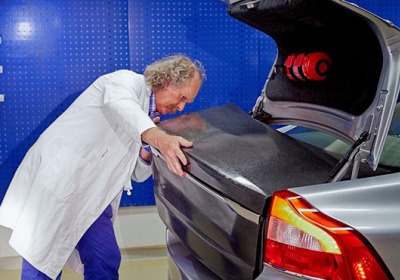Volvo makes breakthrough in battery tech
Thu, 17 Oct 2013Volvo has developed a new way of ‘storing’ energy for its future electric vehicles. The Swedish firm is exploring the concept of lightweight structural energy storage components made from carbonfibre, containing “nano structured batteries and super capacitors.”
This technology is said to offer a lighter, more compact solution to the problem of energy storage, potentially removing the need for the heavy, bulky batteries used in current electric vehicles.
On Bing: see pictures of the Volvo S80
Find out how much a used Volvo S80 costs on Auto Trader
The investigation into the new technology is part of an EU-funded research project, undertaken by Volvo – the only major car manufacturer involved – and nine other organisations.
The new battery breakthrough uses a combination of carbonfibre and polymer resin to create an “advanced nanomaterial” that clothes structural super capacitors.
The reinforced carbonfibre sandwiches the new type of battery, with the panels formed around the vehicle’s chassis – including the bonnet, doors and boot lid.
Some road cars such as the Mazda 6 and many hybrid race cars already use capacitors to store kinetic energy harvested when braking, so the technology could soon be viable for production.
The benefit of using a capacitor over a conventional battery is that charging and discharging of energy occurs much quicker, improving response times.
Volvo has already begun testing the technology on a prototype S80 saloon, with the Swedish firm implementing the system on the boot lid and plenum cover (the structural piece at the base of the windscreen that connects the two front suspension turrets).
The test boot lid is actually lighter than the S80’s standard boot lid, saving on volume and weight when compared to the regular production car.
According to Volvo, the prototype plenum cover demonstrates that the strong, lightweight properties of carbonfibre mean the new material can deliver the structural rigidity needed in this area of the chassis, but will also cut the component weight by 50%.
The energy storage in this panel alone is enough to supply the car’s 12 volt electrical system. It’s thought that by completely replacing an electric car’s existing battery components, the new material could save in the region of 15% of the overall mass.
The best electric cars
Could an electric car work for you?
How green are electric cars?
On Bing: see pictures of the Volvo S80
Find out how much a used Volvo S80 costs on Auto Trader
By motoringresearch.com

